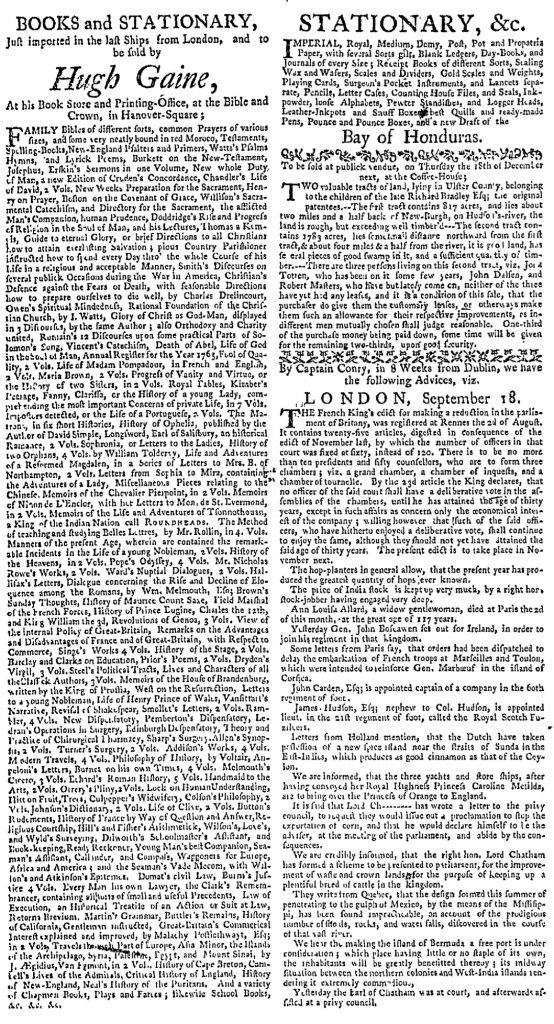What was advertised in a colonial American newspaper 250 years ago today?

“BOOKS and STATIONARY … to be sold by Hugh Gaine.”
Hugh Gaine’s advertisement for “BOOKS and STATIONARY, Just imported in the last Ships from London” occupied a place of privilege in the December 8, 1766, issue of the New-York Mercury. It appeared in the first column (and extended into the second) on the first page, the first item below the masthead and charts for high tides and prices current. Just to make sure that readers noticed this advertisement, several words were printed in the largest fonts that appeared anywhere in that issue: “Hugh Gaine” in a size that rivaled the title of newspaper in the masthead and “BOOKS and STATIONARY” (at the top of the first column) and “STATIONARY, &c.” (at the top of the second column) in sizes nearly as large.
Gaine did not have to pay extra or engage in any sort of negotiations with the printer of the New-York Mercury in order for his advertisement to receive such extraordinary treatment. As the masthead announced, he printed the newspaper! That certainly gave him the authority and ability to design his own advertisement and lay out the issue in ways that best served his own interests. He used one of his products, his newspaper, to promote the assortment of books, stationery, and other goods he sold “at the Bible and Crown, in Hanover-Square.” Sometimes the layout of advertising in colonial newspapers was haphazard. Printers often moved type already set from previous issues into other columns in subsequent issues or changed the order of advertisements in order to insert other items. In this case, however, the placement of Gaine’s advertisement was not merely fortuitous; it was intentional.

On the third page, an advertisement for “HUTCHINS’s Improved: BEING AN ALMANACK AND EPHEMERIS Of the Motions of the SUN & MOON” had similarly large font for some of the key words, distinguishing it from the other advertisements and news items on the same and facing pages. Not surprisingly, the almanac was sol “at HUGH GAINE’s Book-Store and Printing-Office, in Hanover-Square.”
In contrast, a relatively short advertisement announcing that James Rivington had just imported “sundry new Books” appeared on the fourth page. Rivington’s name appeared in all capital letters in a font the same size as the names of other advertisers. Gaine published advertisements from his competitors, but he made sure that his own marketing notices overshadowed them in significant ways. Such was the power of the printer!
